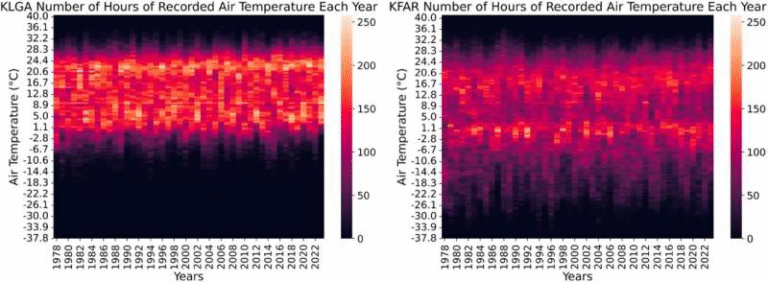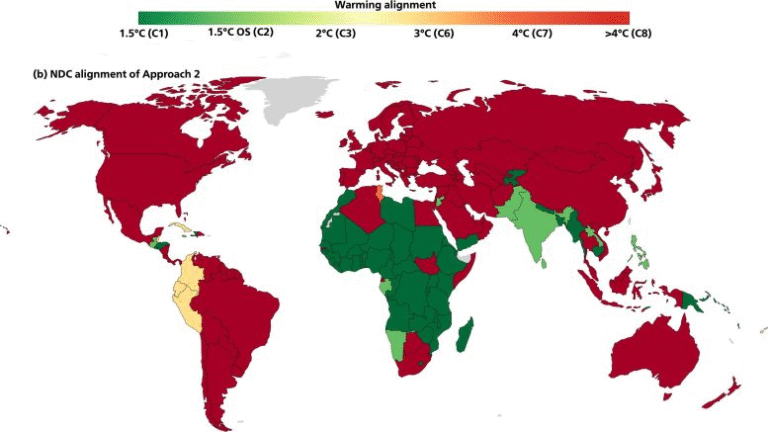High Levels of Short-Chain PFAS Detected in Wilmington Residents’ Blood Raise New Health Questions

A new study from North Carolina State University has revealed that residents of Wilmington, North Carolina, have high levels of ultrashort-chain per- and polyfluoroalkyl substances (PFAS) in their blood. These findings come from research published in the journal Environmental Science & Technology, focusing on samples collected between 2010 and 2016, long before public concern over PFAS contamination in the Cape Fear River Basin became widespread.
The study found that two specific ultrashort-chain PFAS—perfluoromethoxyacetic acid (PFMOAA) and trifluoroacetic acid (TFA)—were present in nearly every blood sample analyzed. Surprisingly, GenX, the chemical compound that originally sparked concern about PFAS in Wilmington’s drinking water, appeared in only 20% of the samples. The research challenges earlier assumptions that short-chain PFAS do not accumulate in the human body, showing instead that these smaller molecules can exist at remarkably high levels.
The Study in Detail
Researchers examined 119 anonymized blood serum samples from adults in and around Wilmington, collected as part of a University of North Carolina biobank. They also analyzed water samples from the Cape Fear River taken in 2017, looking for 56 different PFAS compounds. Of those, 34 PFAS were detected in at least one blood sample.
Five PFAS made up the majority—about 85% of the total PFAS detected—with the following median concentrations:
- PFMOAA: 42 nanograms per milliliter (ng/mL)
- TFA: 17 ng/mL
- PFOS: 14 ng/mL
- PFOA: 6.2 ng/mL
- PFPrA: 5.4 ng/mL
The dominance of PFMOAA and TFA in these samples was striking. PFMOAA alone accounted for 42% of the total PFAS, while TFA made up another 17%. These two chemicals—classified as ultrashort-chain PFAS because of their extremely short carbon chains—were not previously believed to persist in the body. However, this study’s findings show that they can not only be present but may dominate the chemical profile in human blood.
Water Contamination in the Cape Fear River
To understand the source of these compounds, scientists compared the blood data with water samples from the Cape Fear River, Wilmington’s main drinking water source. The results were equally concerning. In the 2017 water samples:
- TFA was found at 110,000 nanograms per liter (ng/L)
- PFMOAA was found at 38,000 ng/L
For context, one European guideline recommends a drinking water limit of 2,200 ng/L for TFA. That means Wilmington’s sample contained roughly 50 times that level.
The researchers concluded that the main contributor to these compounds in the river was the Fayetteville Works plant, an upstream chemical manufacturing facility. This plant, previously associated with DuPont and later Chemours, has been releasing PFAS into the river since the 1980s. Although discharge controls were implemented after 2017, this study shows that exposure had already been happening for decades.
Why These Findings Matter
Historically, scientists and regulators have focused on longer-chain PFAS such as PFOA, PFOS, and GenX because they are known to persist in the environment and the human body. In contrast, short-chain and ultrashort-chain PFAS were thought to pass through the body more quickly due to their small molecular size and high solubility in water.
This study turns that assumption on its head. Despite their shorter chains, PFMOAA and TFA were found in nearly every blood sample, suggesting that bioaccumulation is possible even for ultrashort-chain compounds. Researchers emphasize that these chemicals could enter the body through drinking water, food, or even inhalation of contaminated air or dust.
The concern is that there is very limited toxicological data on PFMOAA and TFA. While many PFAS are known to affect the liver and immune system, the specific health effects of ultrashort-chain variants remain largely unknown. Scientists now believe that studying these compounds more closely is crucial for understanding their impact on human health.
A Timeline of Exposure
The blood samples used in this study serve as a historical record of PFAS exposure before the public was even aware of the contamination. Between 2010 and 2016, residents were unknowingly exposed to drinking water contaminated with PFAS compounds—some of which weren’t even detectable at the time due to the lack of analytical methods.
It wasn’t until 2016, when NC State and the U.S. Environmental Protection Agency (EPA) published their earlier findings on high PFAS levels in Wilmington’s water, that the public began to understand the scale of the issue. The current research gives scientists a “timestamp” of that period, showing the chemical footprint of exposure in residents’ blood before any mitigation measures were put in place.
The Broader PFAS Problem
PFAS, often called “forever chemicals,” are a large class of synthetic compounds used since the 1940s in products like nonstick cookware, waterproof fabrics, and firefighting foams. Their chemical stability makes them useful in industry—but it also means they do not easily break down in the environment or the human body.
Because of their persistence, PFAS have been detected worldwide—in air, soil, rivers, and even rainwater. Studies have shown that nearly everyone has some PFAS in their blood, though concentrations vary depending on proximity to pollution sources and product use.
While much of the attention has focused on well-known compounds like PFOA and PFOS, this new research highlights that the PFAS story is much larger. As industries phase out older PFAS and replace them with newer, shorter-chain alternatives, we may be swapping one problem for another.
What’s Next for Wilmington and Beyond
The researchers plan to analyze new samples from the GenX Exposure Study, a long-term project tracking PFAS exposure in the region. Comparing these with historical samples will help scientists determine how PFAS levels have changed over time and how ultrashort-chain PFAS behave in the human body.
For residents of Wilmington, this study reinforces the importance of monitoring water quality and supporting ongoing remediation efforts. While Chemours and state regulators have taken steps to limit PFAS emissions, these chemicals’ persistence means past contamination continues to affect local ecosystems and people.
From a policy standpoint, the findings add pressure on regulators to expand water safety standards beyond the usual PFAS suspects. If ultrashort-chain PFAS can accumulate in people at high levels, they should be considered in risk assessments and drinking water guidelines worldwide.
The Science of Ultrashort-Chain PFAS
To understand why PFMOAA and TFA are so concerning, it helps to know a bit about their chemistry. These molecules have very short carbon backbones—usually fewer than four carbon atoms—and are highly water-soluble. Because of that, they travel easily through groundwater and can be harder to remove using conventional filtration methods like activated carbon.
TFA, for instance, is produced as a byproduct of fluorinated refrigerants and industrial processes. It can form in the atmosphere and return to Earth in rainwater, meaning its sources are both local and global. PFMOAA, on the other hand, has been directly linked to industrial discharges from the Fayetteville Works facility.
Both compounds resist natural degradation, making them persistent in both the environment and the body. Understanding how these ultrashort-chain PFAS behave biologically—how they are absorbed, distributed, and eliminated—is now a top research priority.
Moving Forward
The study’s message is clear: shorter doesn’t mean safer. Ultrashort-chain PFAS, once overlooked, are emerging as a dominant class of contaminants in human blood and drinking water. The Wilmington findings underscore the urgent need to expand our focus from just a handful of legacy PFAS to include the full spectrum of these synthetic chemicals.
The research also shows the value of archived biological samples, which allow scientists to reconstruct exposure histories and track how chemical use and regulation influence public health over time. As analytical technologies improve, more such studies may uncover hidden patterns of contamination in other regions.
Ultimately, addressing the PFAS problem will require global cooperation, better industrial transparency, and investment in advanced water treatment technologies. For now, studies like this one serve as a crucial reminder that our understanding of PFAS is still evolving—and that vigilance, science, and strong public health policies will be essential to protect communities in the years ahead.





